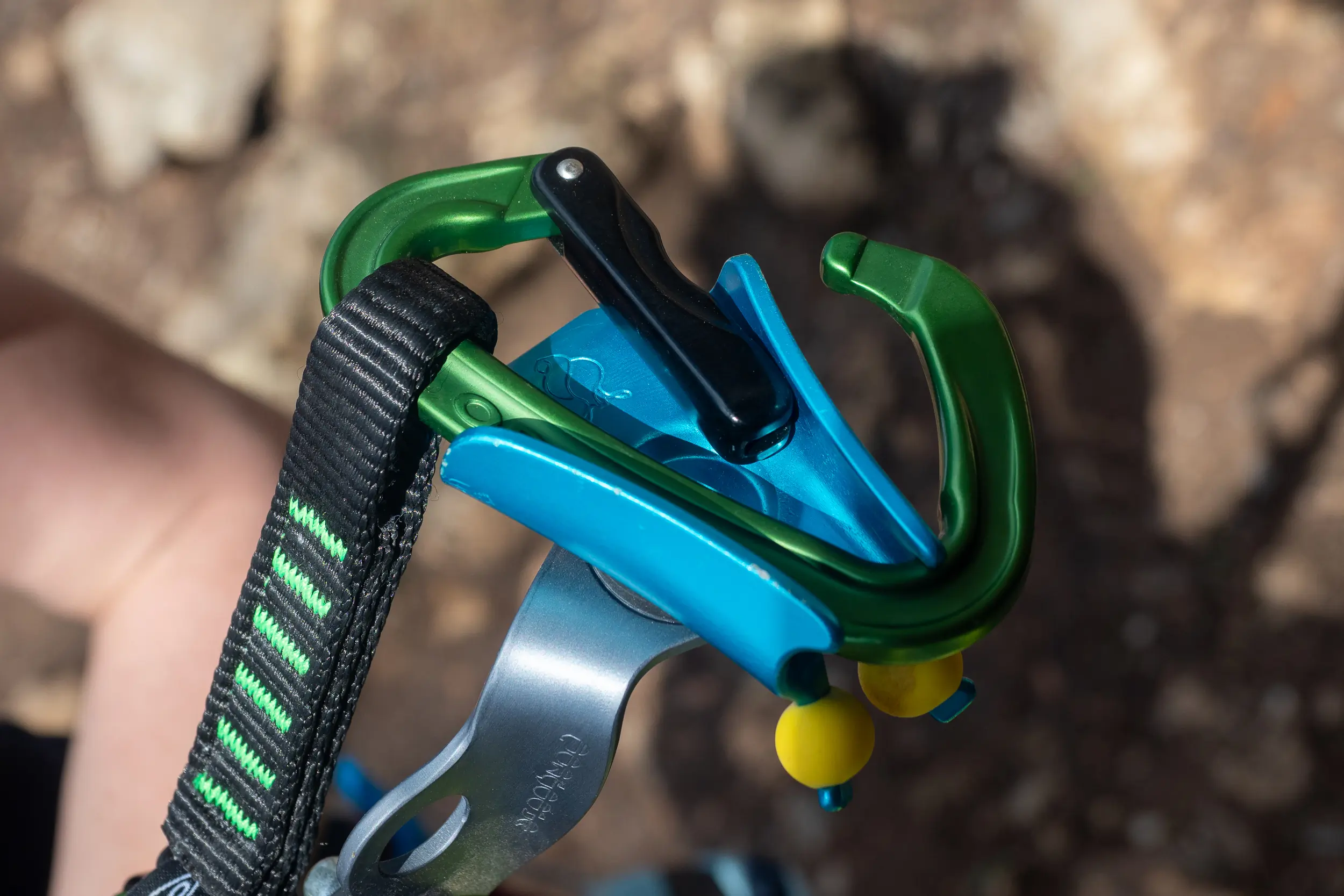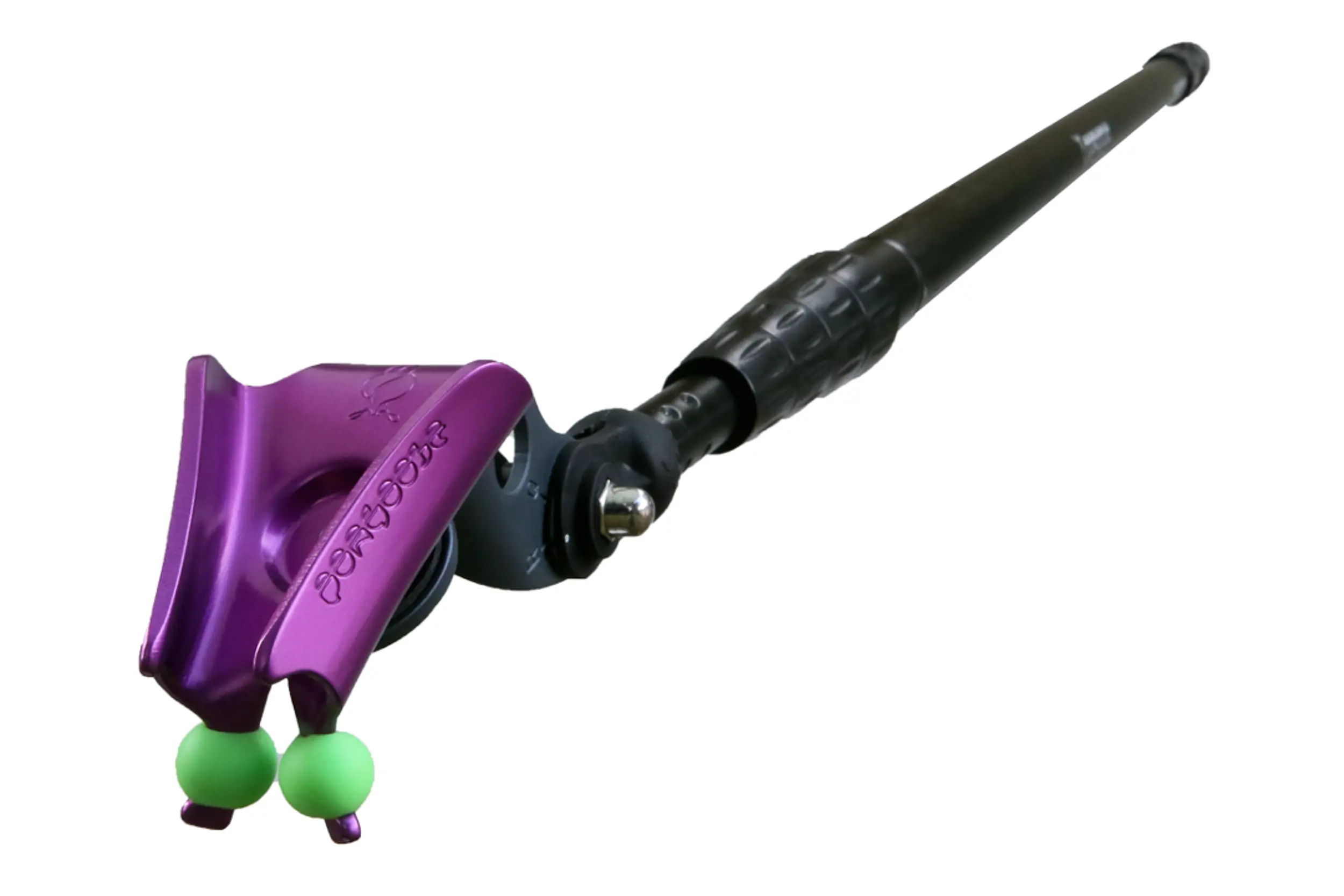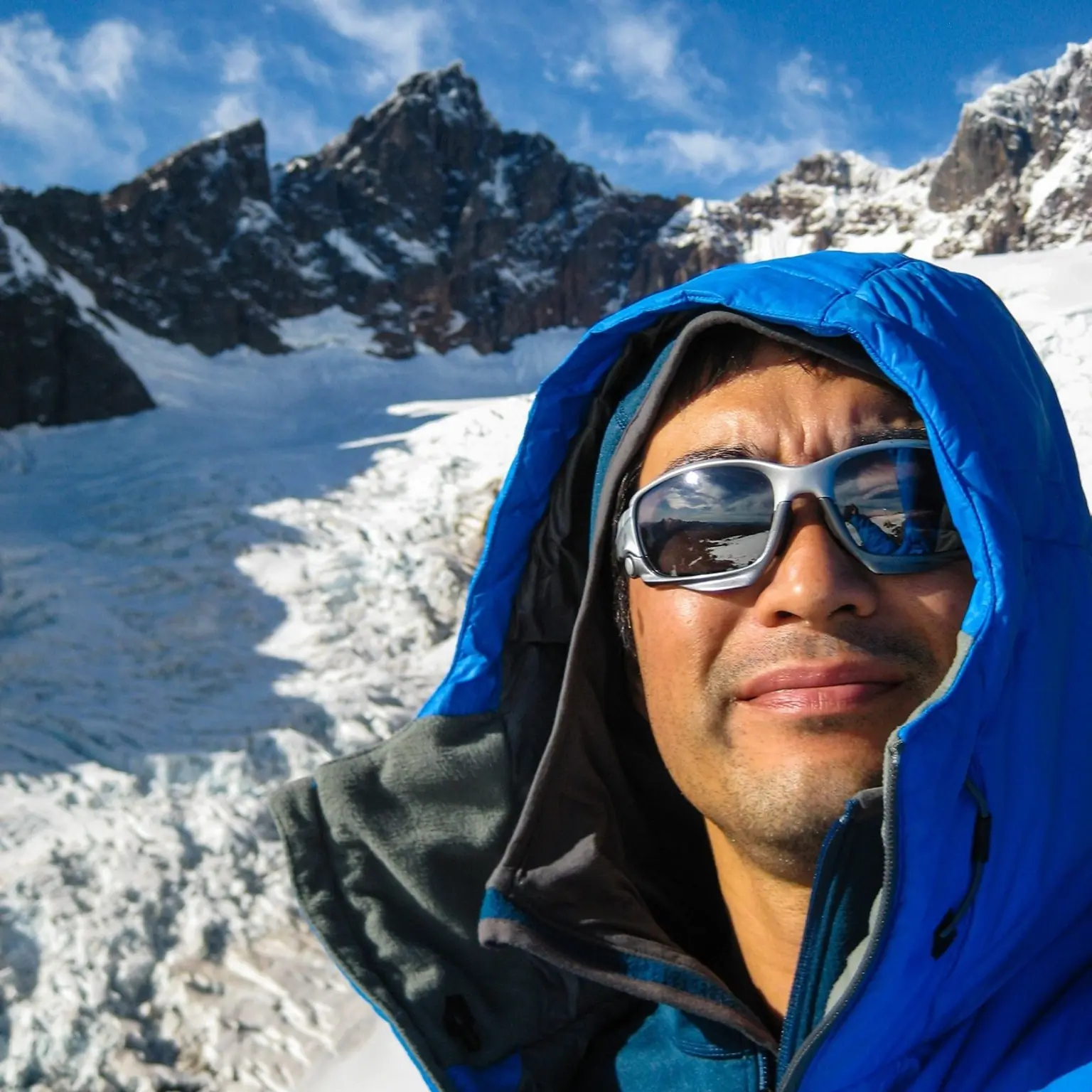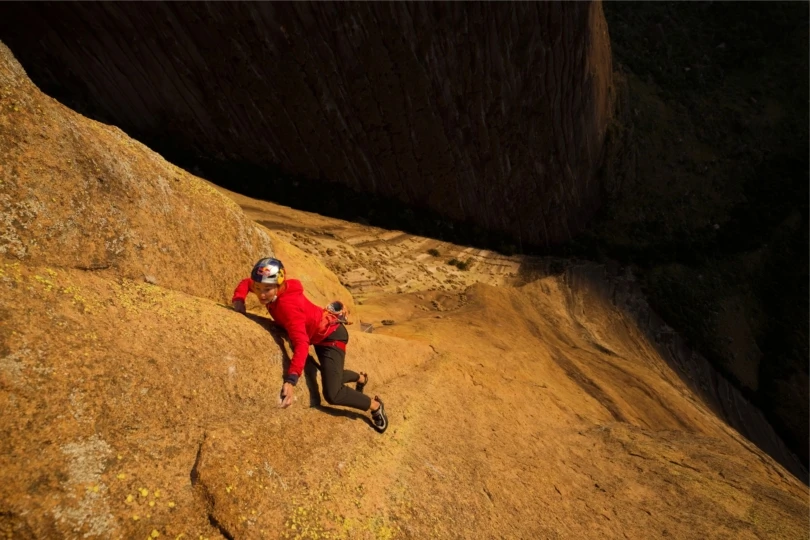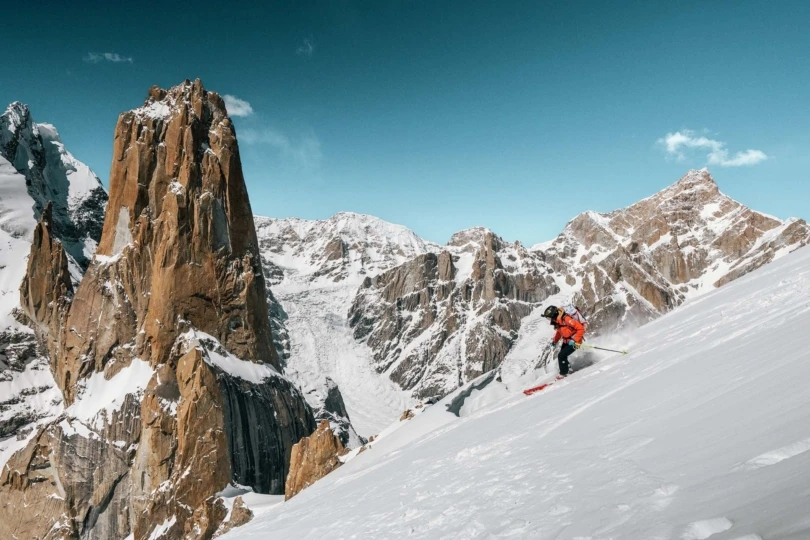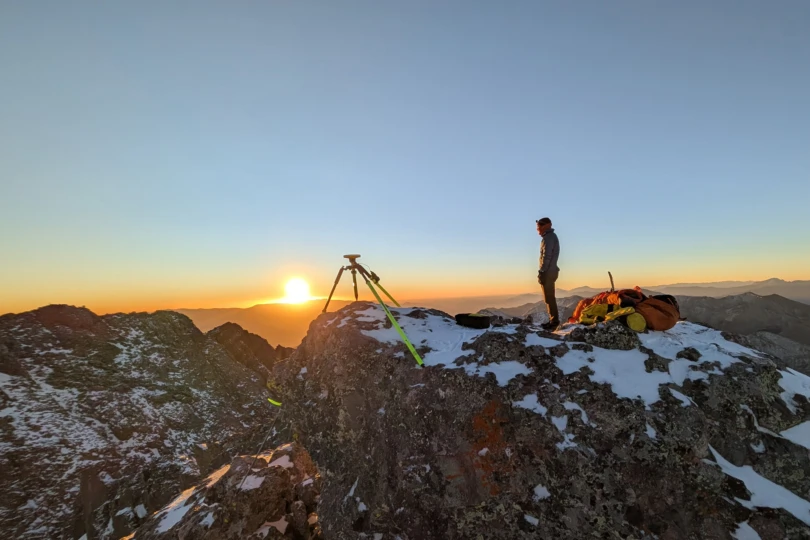The original stick clip was cobbled together in a foraging style at the base of the cliff. The bolt-clipping rock jock would source a stick of the correct length and stiffness. With climbing tape and a twig or pebble to hold the carabiner gate open, salvation was at hand.
But sometime in the late ’80s, I started seeing paint poles with a hardware store clamp emerge as a somewhat commercial stick clip. It served well for decades.
Rock climbing escalated in popularity with the advent of the climbing gym, and soon enough, purpose-driven stick clips emerged. Sport climbers rejoiced. These niche remote clipping devices transformed putting the first rope-loaded quickdraw up into a consistent routine.
The new commercial stick clips, which were often “heads” that screwed onto standard paint poles, could also cleverly clip the rope into the first quickdraw or remove a hanging quickdraw.
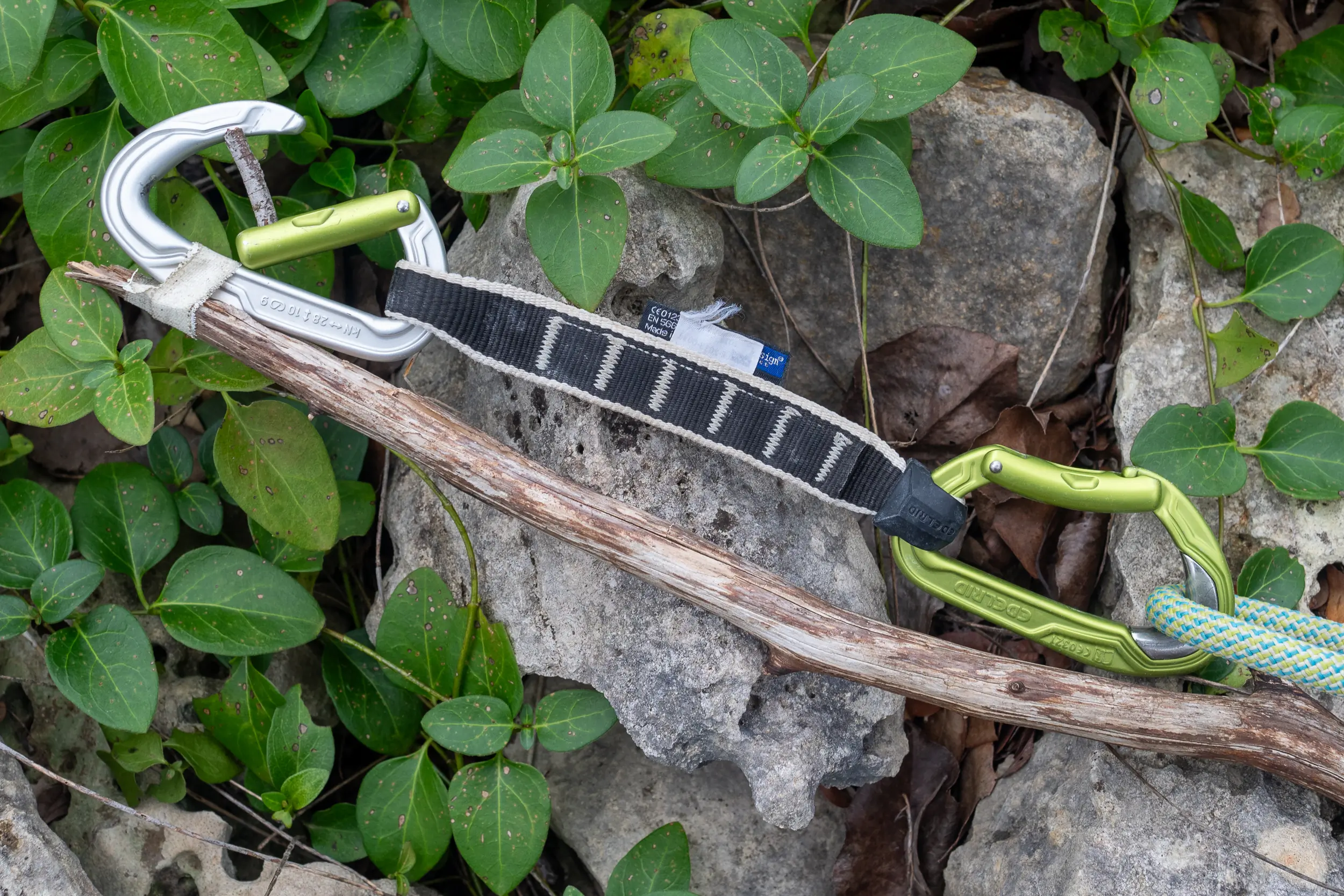
But it’s the 2020s, and progress is constant. Newer stick clips have built-in collapsible poles and are more adept at all the jobs that revolve around the first bolt and sometimes other bolts. I’ve even seen stick clips used from the ground to put quickdraws on every bolt of a local route. I’ve received every version of the modern stick clip, but the one from Pongoose, by far, is the most unique.
I tested the Pongoose Climber 700+ 3-in1 Stick Clip for 3 months of local sport climbing. One of my local crags has plenty of high first bolts. When I was young and dumb, I rarely used a stick clip, touting it as “cheating.”
But now, in my older years, I happily stick clip first bolts, as I see zero reason to risk a groundfall to stroke my ego. And the Pongoose 700+ Stick Clip was an elegant tool to clip or remove the first quickdraw. It also was adept at other functions.
In short: The Pongoose 700+ Stick Clip (MSRP $109) was the epitome of stick clips. It efficiently hung the first quickdraw, clipped the rope, and removed quickdraws consistently. The hassle and frustration were minimal, and the stick clip performed other climbing-related functions as a bonus.
- Collapsed pole length: 28.3"
- Extended pole length: 108.7"
- Head length: 5"
- Verified total weight: 1 lb., 6 oz.
Pros
- Horizontal quickdraw orientation keeps bolt hanger visible
- Very adept at clipping the rope into a hanging quickdraw
- Consistent at removing a hanging quickdraw
- Robust aluminum head with no moving parts
- Stable all-aluminum pole
Cons
- Collapsed pole doesn't fit in most 40L+ packs
Pongoose Stick Clip: It’s All in the Head
The Unique Pongoose Stick Clip Head
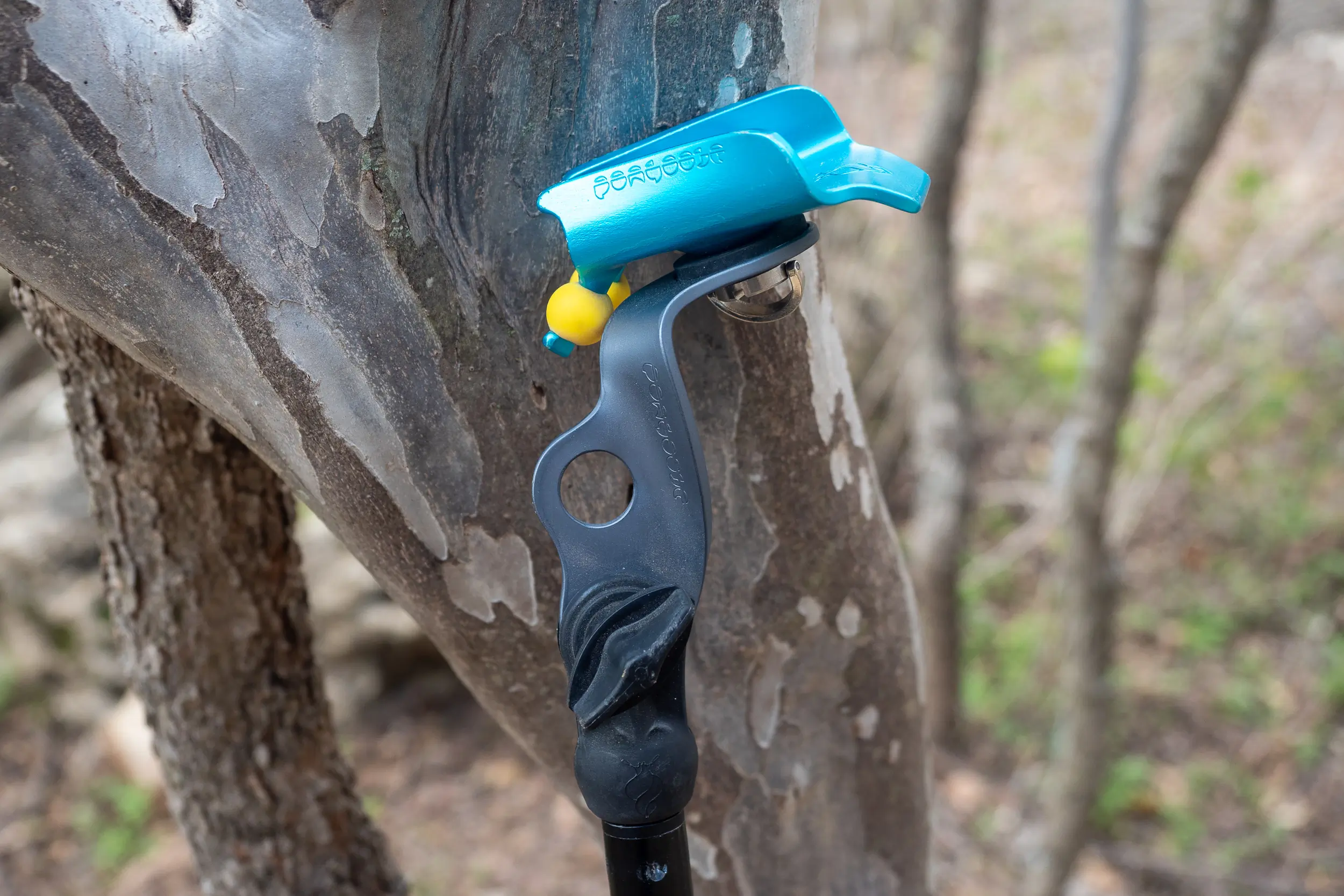
As far as stick clips go, the functional differences are in the design of the head. And Pongoose created a one-of-a-kind stick clip head that looks slick and elegant.
At first glance, the sculpted anodized aluminum head caused some head-scratching. It’s so different than any other remote clipping device I’ve ever made or tried. But referencing the explanatory videos on the Pongosse website elicited an, “Ah, damn, that’s so clever” from my skeptical mind. Through 5 years of development and a dozen redesigns, the British masterminds at Pongoose have unlocked several causes of remote clipping frustrations.
The glaring difference in the Pongoose Climber 700+ compared to other stick clips is the horizontal orientation of the quickdraw. All other remote clipping gadgets hold the quickdraw vertically. The horizontal orientation of the Pongoose head prevents the quickdraw from blocking the view of the exact thing a climber is trying to access. The head orientation is also adjustable in two planes.
Another difference is the lack of moving parts or plastic, promising a long life. I’ve had other plastic stick clip heads break from simply falling while leaning against that cliff. And I’ve had other heads’ moving gate retention mechanisms fail.
The Pongoose Climber 700+ head removes both of these possibilities. And, unlike others, Pongoose sells every part of its Climber 700+, making it infinitely repairable should it get damaged. The only moving parts are the head’s adjustable mounting bracket and the head’s threaded connection to that bracket.
And finally, if it matters, Pongoose offers the Climber 700+ head and silicone beads (read about them later) in five different colors. I do find that sport climbing and bouldering have become quite fashion-conscious lately. Gone are the days of wearing painter’s pants or Lycra and being considered cool.
Pongoose Stick Clip Pole
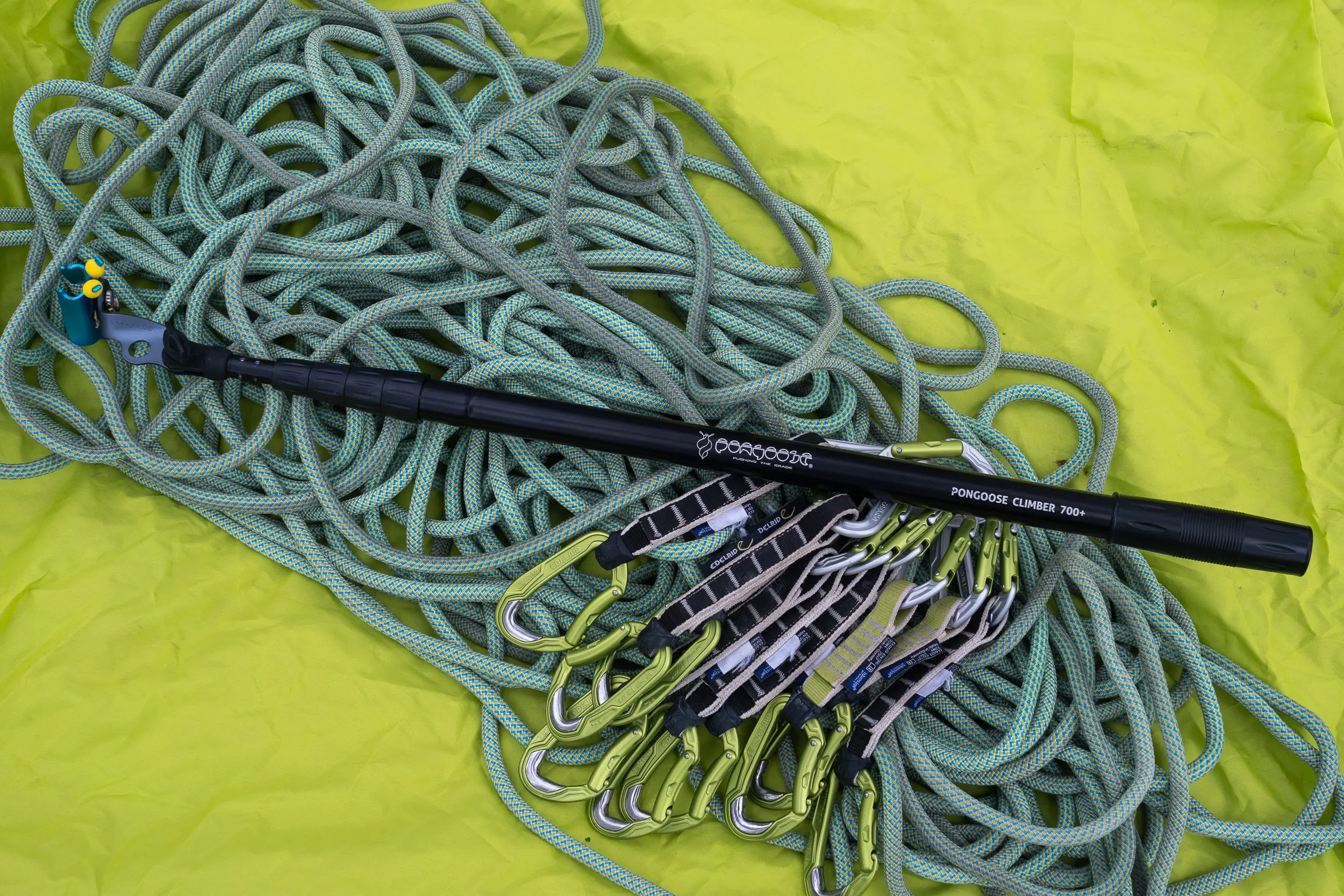



I’m all about long, telescoping poles that can fit in my crag pack but extend far enough out to clip sketchy second bolts (yep, I’m getting older and maybe wiser.) But stick clip poles have often been flimsy at full extension. This made inserting the draw, rope, or removing the draw difficult or impossible. Pongoose purposely went with a five-section pole that may not be as compact as others but is said to be much stiffer.
In travel mode, the Pongoose Climber 700+ pole is 28.3 inches (the head is 5 inches long) and can extend to 108.7 inches. The Climber 1000+ pole, which Pongoose offers separately, is 40.2 inches collapsed and 164 inches extended. The complete Pongoose Climber 700+ weighs a verified 1 pound, 6 ounces.
The twist-lock pole is topped off with a standard ¼-inch camera thread for use as a monopod. The bracket that holds the Pongoose head has the same camera mount, allowing use as an action camera selfie stick with an adjustable mounting angle.
How It All Works
First off, the collapsed Pongoose Climber 700+ Stick Clip didn’t fit in my 40L crag pack. But I just left the top sticking out of a gap in the zipped lid. It most likely fits in 60L packs.
The stiffness of the pole compared to my other commercial stick clips was instantly apparent. I gladly accepted the larger collapsed length for a more rigid, robust-feeling pole.
The proper use of the Pongoose Climber 700+ isn’t obvious, and for the first time in a long time, I had to reference the brand’s instructional videos. Instead of trying to explain all the proper methods, I’m embedding these videos and commenting on my experiences after each.
Clipping Bolts
I cannot overstate how much easier it was to clip the bolt hanger with the quickdraw held horizontally in the Pongoose Climber 700+ Stick Clip. From the very first clip, I knew it was the superior orientation.
No more guessing, craning my neck, or holding the pole awkwardly outward to glimpse the hanger to hopefully aim the upper carabiner correctly. I could see the entire process without struggles. Kudos to Pongoose for figuring out what we all should have from the beginning!
Inserting the quickdraw was a one-handed operation, unlike most other stick clips. This is important when going full “French-free” sport climbing mode. I could anchor and sit in my harness on the bolt, hold the pole with one hand, and insert the quickdraw with the rope clipped with the other.
Then I could clip the next bolt and climb on top rope, at least to that bolt. With most other stick clips, I have to monkey around with my legs to hold the pole to have both hands free to attach the quickdraw.
The Pongoose Climber 700+ Stick Clip was also adept at clipping quickdraws in roofs. The horizontal alignment again meant that the hanger was visible for the entire operation. And the ability to tweak the head angle helped when I had to stand off to the side of the roof bolt.
The head of the Pongoose Climber 700+ has a hole to clip. This allowed hauling the stick clip up with me on my harness or sending it up to a climber on a route by clipping it to the rope.
Clipping the Rope Into a Quickdraw
Again, the horizontal orientation of the Pongoose Climber 700+ Stick Clip stole the show. It held the loop of rope perpendicular to the carabiner gate, omitting any contortions to line everything up correctly. I never once missed clipping in the rope at any angle, including roofs.
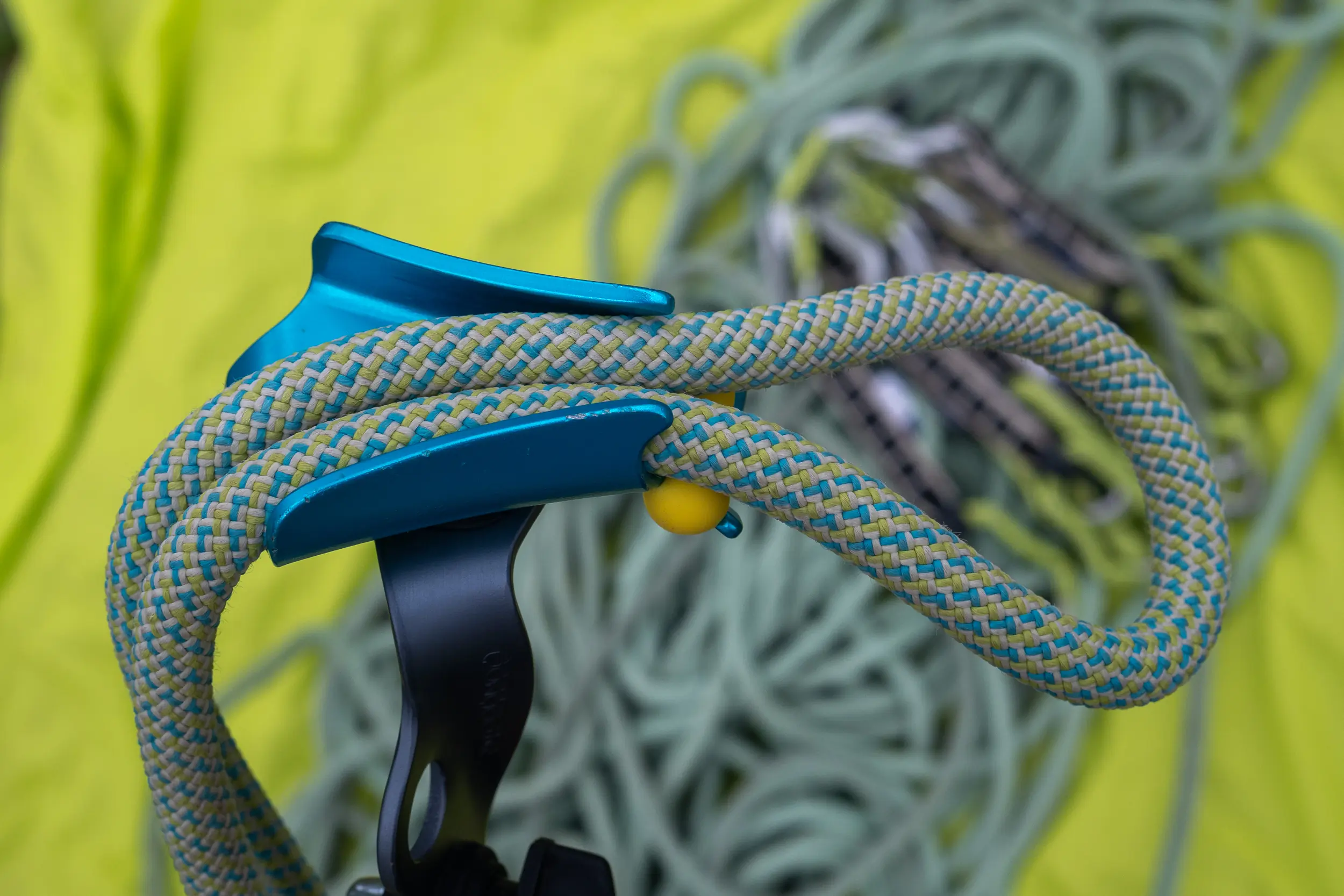



I could also finagle the bight of rope into the head one-handed, allowing the assault of pre-hung routes in a full, sit-on-the-bolts sport-climbing siege.
Removing a Quickdraw
The keys to getting quickdraws off a route were the two silicone beads that gripped the spine of the upper carabiner and the horizontal alignment of the bight of rope used to open the top carabiner. Both made what can be a difficult task with other stick clips routine.




The horizontally aligned loop of rope made it much easier and more consistent to open the top carabiner’s gate fully. And the silicone beads held quickdraw steady so I could consistently get it out of the hanger and lower it to myself on the first try.
Other Pongoose Climber 700+ Stick Clip Functions
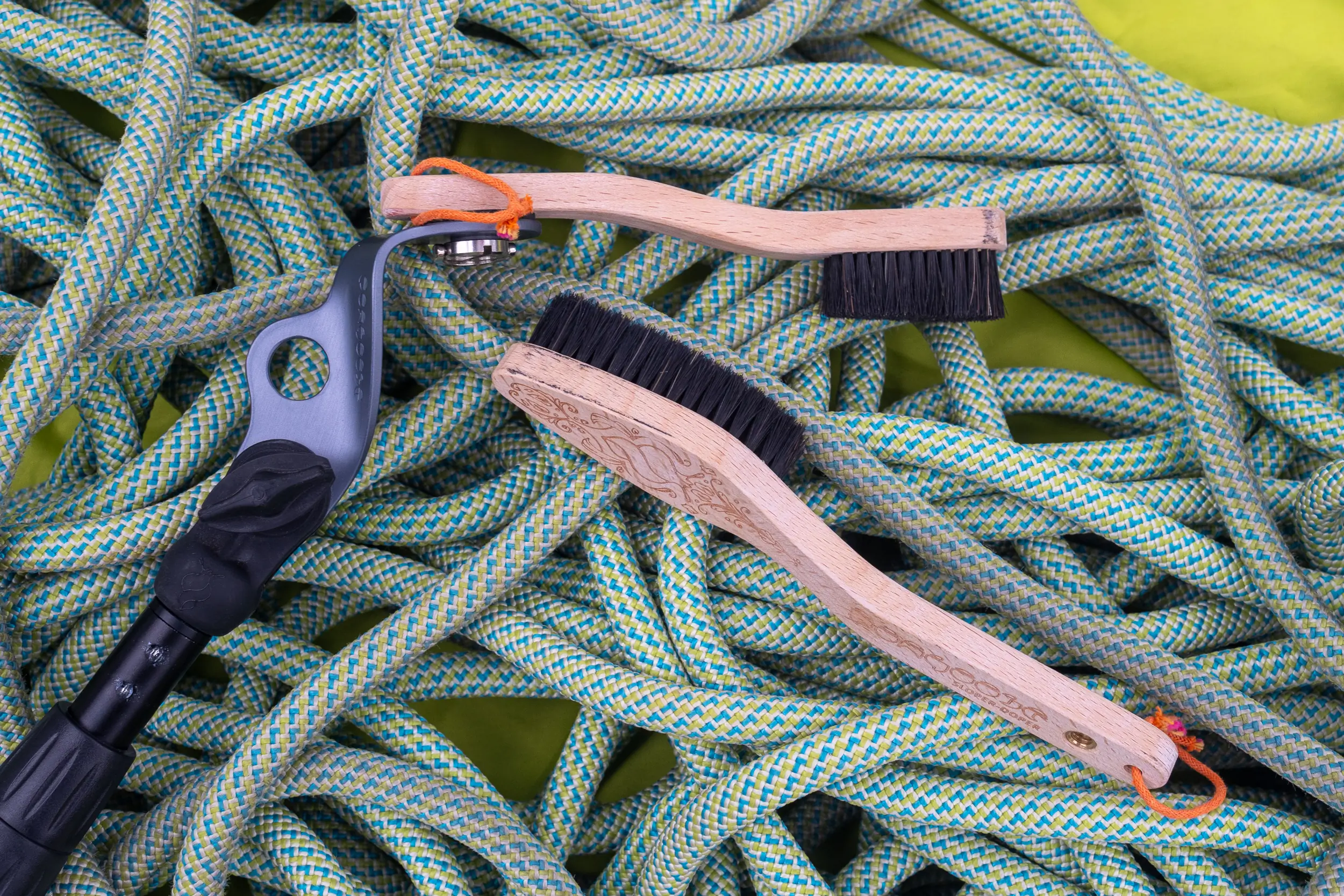



The standard ¼-inch threaded camera mount on both the pole and the head of the Pongoose Climber 700+ proved useful beyond the explained stick clip functions.
Stick Brush
Pongoose sent me two very nice, high-quality brushes with matching ¼-inch threaded inserts in the handles. They can be mounted brush side up or down, and the brush angle can be adjusted.
This combination proved a worthy stick brush for prepping the route for a redpoint attempt. I never failed to brush holds off as long as I could reach them. The adjustable angle helped match hold angles to get the best leverage for effective scrubbing.
The Pongoose pole was stiff, and the head was the weak link in the chain. I could provide plenty of pressure to brush a route I was hangdogging. But the setup wasn’t burly enough for the necessary cleaning when developing a new route. But I wasn’t expecting that out of a telescoping stick clip.
Action Camera Selfie Stick
The same mounting method for the brushes worked with my GoPro. The result was an incredibly long selfie stick, which proved effective for getting the preferred top-down action shots. I also used the setup to get the top-down “this is what I packed” images typical of editorial trip reports.
I have a GoPro Hero 12 Black, and the head and pole were solid enough at full extension to get good shots. But anything heavier wouldn’t be stable enough at full extension.
Monopod
The same ¼-inch threaded camera mount sits on the Pongoose pole. This made for a great monopod with the pole collapsed. I used it with my mirrorless camera to get usable shots in low-light conditions.
Pongoose included a wooden ball with a matching threaded insert to cover these threads when traveling with the Climber 700+. The brand recommends removing the head to protect it during transport. The wooden ball protects your luggage from getting torn by the threaded mount.
Conclusions on the Pongoose Climber 700+ Stick Clip




Every element of the Pongoose Climber 700+ Stick Clip was an improvement over any other remote clipping device I’ve tried. The horizontally aligned and robust head was so much easier to use. It kept the bolt hanger visible and held the rope in the correct orientation for clipping or removing a draw. And the lack of plastic and moving parts promises it will accompany me to the crag for years to come.
While not as compact as others when collapsed, the pole provided a rock-stable platform for all the stick clip functions. It also delivered the leverage necessary for hold brushing. Finally, it acted as a steady boom in selfie-stick or monopod mode. And just like the head, the pole felt much more robust than on other commercial stick clips.
Ultimately, I’ve placed the Pongoose Climber 700+ Stick Clip in my sport climbing everyday carry collection. I have every commercial stick clip and several proven DIY versions available. And this is the one I’ll carry on my personal climbing days.
